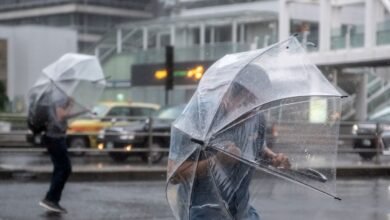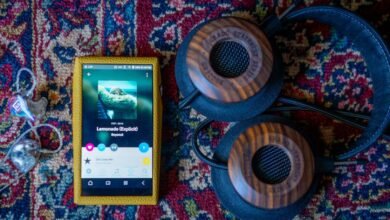Coast-to-coast in a solar-powered car — and a new Cannonball Run record

When you think of the Cannonball Run, you probably think of a group of people making the trip from New York’s Red Ball Garage to the Portofino Hotel in Redondo Beach in the shortest (and usually most dangerous) amount of time. Police encounters, lack of sleep, zero rest stops, a spare fuel tank or two, and gallons of energy drinks are usually what fuels these attempts to make the roughly 3,000-mile route in record time.
But something was lacking in the most recent successful attempt: conventional gasoline. That’s because speed wasn’t the aim of the three friends who built and drove a solar-powered car across the country in a record-setting 13 days, 15 hours, and 19 minutes.
While that’s more than 300 hours longer than the 25-hour record set in 2020 in a modified internal combustion vehicle, it’s the first time that a solar-powered car has completed the route. Meet the Cannonball Sun, a project that four young engineers from Michigan decided to take on this summer.
“Nobody’s ever done it before. It was a challenge for everybody involved,” Danny Ezzo, a student at Michigan Tech and one of the engineers who helped build and drive the solar vehicle, said after arriving in Redondo Beach on Sunday night.
This isn’t the first time that Will Jones, Kyle Samluk, and Danny Ezzo have built a solar car together, nor is it the first time they’ve tried to complete the NYC-to-LA route in such a vehicle. The three young engineers tried to do the Cannonball Run in 2021, but a motor controller failure forced them to cut their trip short in Logansport, Indiana — 2,284 miles short of their goal.
Jones and Samluk had previously built and competed in the Solar Car Challenge together in high school, and the two met Ezzo at college while competing in cross-country running. Jones kept chasing the sun while at the University of Michigan. Over fall break in 2023, they all decided to attempt another Cannonball Run, despite the fact that they were all going to school eight hours apart. “All it took was a little convincing and some pizza,” Jones said.
“Nobody’s ever done it before”
The team took lessons from their failed attempt to make it from NY to LA in a solar car in 2021 and made significant changes to the new vehicle. Ezzo says they used more efficient components to make the vehicle 48 percent lighter and did a 600-mile road trip around their homes in Michigan to shake out any issues. “From the time we decided to do it to the time we were in NYC with a running, driving, solar car was five months, so the timeframe was super crunched,” Ezzo added. “We were crazy ambitious and maybe a little naive.”
The result was a vehicle they took to calling Sunstrider. It was comprised of welded-together tubing, corrugated plastic (also known as coroplast), various 3D printed parts, a homemade 320-cell battery pack, three motors (which were down to 2.5 working motors by the end of the trip), and eight solar panels that were donated by HighTec Solar, a solar panel manufacturer in Michigan.
The three wheels (two in the back and one in the front) are actually bicycle wheels, a choice the team says they’d rethink if they did a long-distance run again because the spokes kept breaking.
The cockpit that the team designed was made to fit the tallest driver, and the position is laid back like a recumbent bike. There is an accelerator pedal and front brake pedal, but most of the braking was handled by a pair of mountain bike brakes that went to the rear wheels. Everything is mechanically connected. There’s no steering wheel, but rather a set of handlebars inside to steer the Sunstrider.
“We were crazy ambitious and maybe a little naive”
I got a chance to take the vehicle for a very short spin in the parking lot of the Portofino Hotel before the team loaded it back into the trailer for the long trip back to Michigan, and while it had a gigantic turning radius, it was easy to see thanks to the clear plexiglass bubble and precise steering. From the cockpit, the solar car is about as wide and long as a Ford F150 but only weighs in at 560 pounds. To turn through sharper corners, the young men had to get out and push the vehicle into position.
The Sunstrider is registered as a motorcycle in Michigan, so it was fully road-legal, though the team wasn’t able to drive it on major highways because it couldn’t physically go faster than 55mph. On the downhill run along Angeles Crest toward the Pacific, the team said they saw a max speed of 51mph. All in, the team says the vehicle cost them around $12,000 to build, and 90 percent of it was funded with their own money. They crowdsourced funds to cover room and board as they made their way across the country and accepted sponsors for other incidentals.
The team battled high heat in the desert and had to replace the charge controller when it broke in Desert Center. They also had to suffer through temperatures as high as 128 degrees inside the car without any air conditioning. They brought along another friend, Brett Cesar, who helped Samluk and Jones build their first solar car in high school, to be a fourth driver. In good weather, the team rotated driving stints about once every two hours. Through the desert, the team had to swap out in 30- to 45-minute increments to avoid heat stroke and dehydration, while other members followed in a chase vehicle.
Jones’ father, Brian, drove the car trailer and ensured that the team was hydrated, fed, and housed for the trip. They took to calling him “Solar Dad.”
It wouldn’t be a Cannonball Run without having to explain yourself to the law, and the team got pulled over twice in Ohio, both times for going too slowly. Ezzo said that one officer took some photos of the car and told them to speed up because they were impeding traffic, even though they were going the speed limit. Neither cop ticketed them.
On the road, people gawked, took photos, and honked at the spacecraft-shaped vehicle, according to the team. One guy even rolled his window down as the team was coming to the finish line to ask about their project. When they told him they were doing the Cannonball Run, he cheered them on and honked as he went past.
Overall, Ezzo and Jones say they learned a lot from their successful cross-country run. They may try driving a new solar-powered car on a route through Alaska or along the Pan-American Highway next, but real life may get in the way. Jones has a job lined up at SpaceX, Samluk has one lined up at Ford, and Ezzo is still a student at Michigan Tech.
“It means a ton to us as a team,” Ezzo said about being the first solar-powered car to complete the Cannonball Run. “All the 100-hour weeks, skipped family gatherings, and sacrifices we’ve made were all worth it.”
Source link





